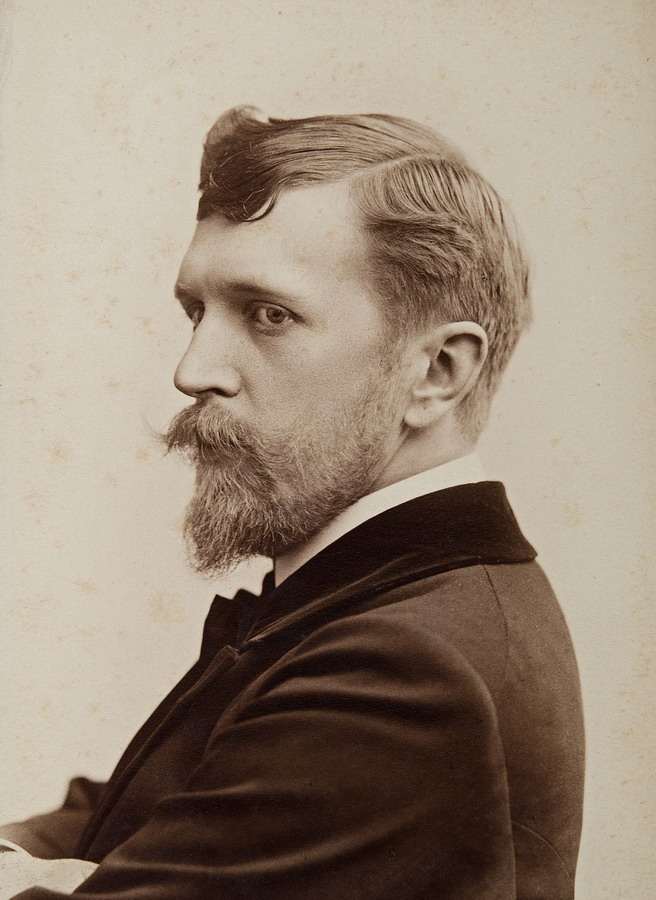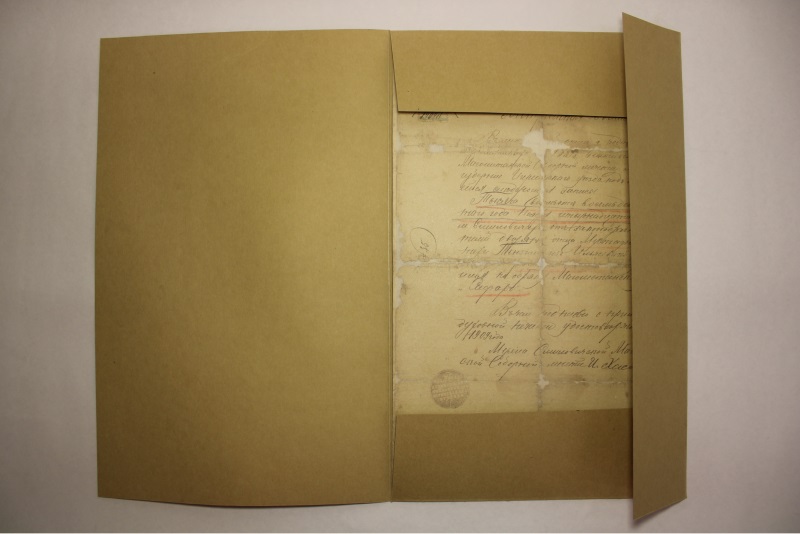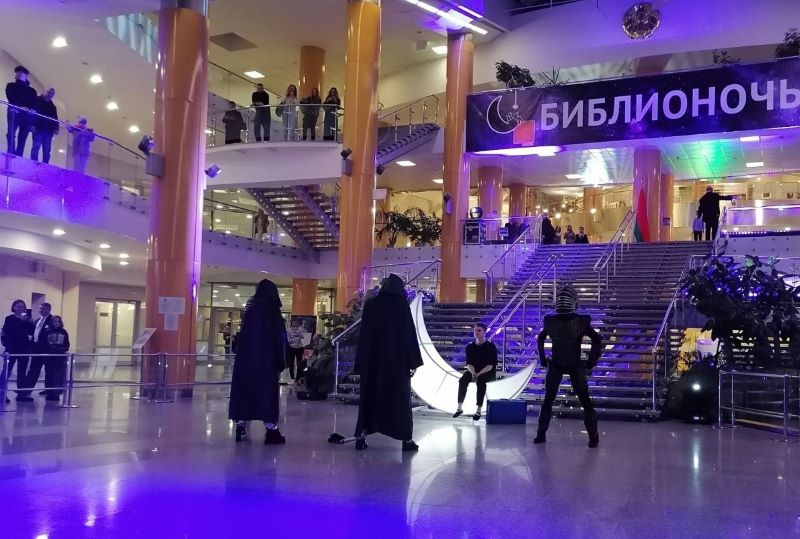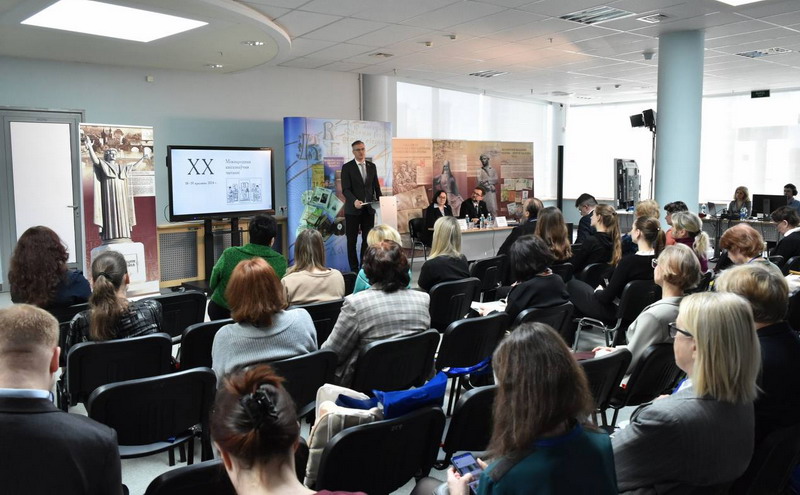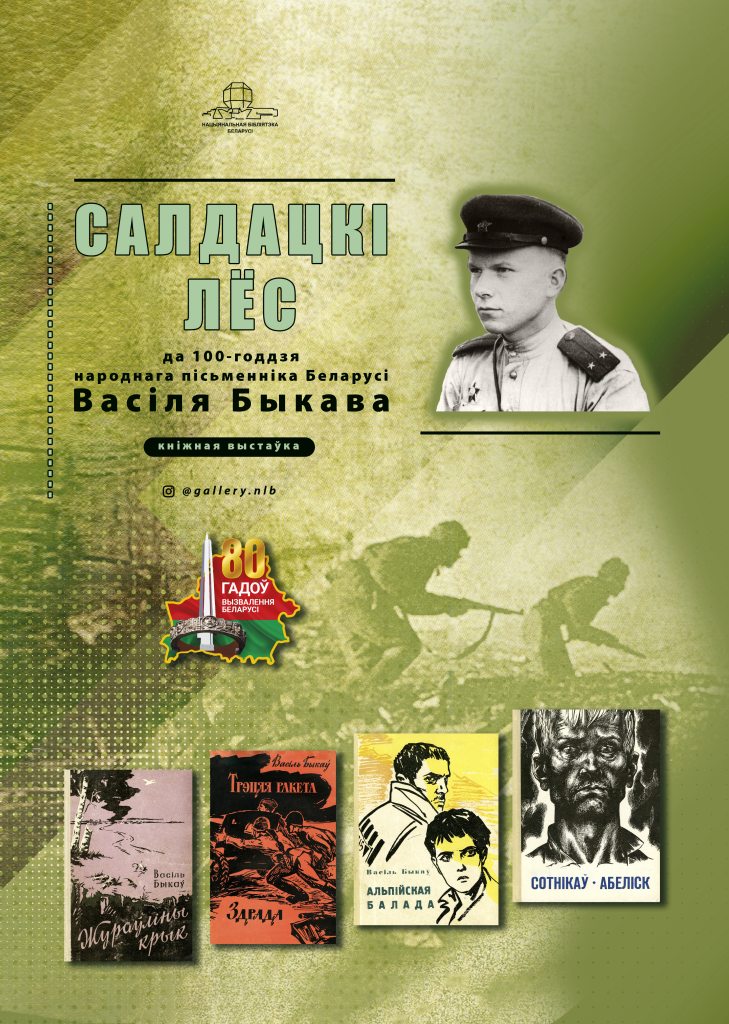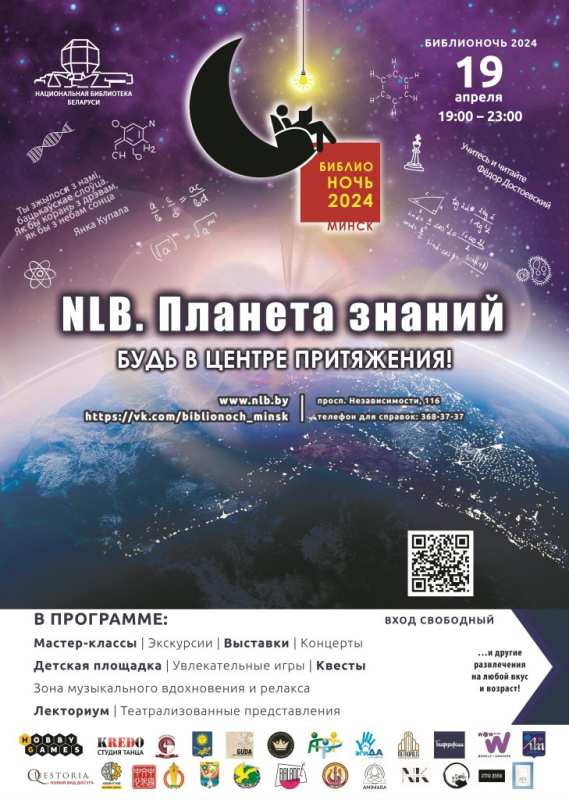December 10 marks the 150th anniversary of the wonderful son of the Belarusian land, Polish and Belarusian landscape artist, graphic artist, set designer, teacher, professor and public figure Ferdynand Rushchyts (1870–1936). The artist's anniversary is included in the UNESCO List of Commemorative Dates for 2020.
Ferdynand Rushchyts was born in the estate of Bagdanava in the former Ašmiany district of Vilnia province (now Voložin district of the Minsk region), in a poor noble family. But Ferdynand spent his childhood and youth in Minsk, where the family moved after Edward Rushchyts had been appointed Head of Accountants in the construction administration of the Libavo-Romen Railway.
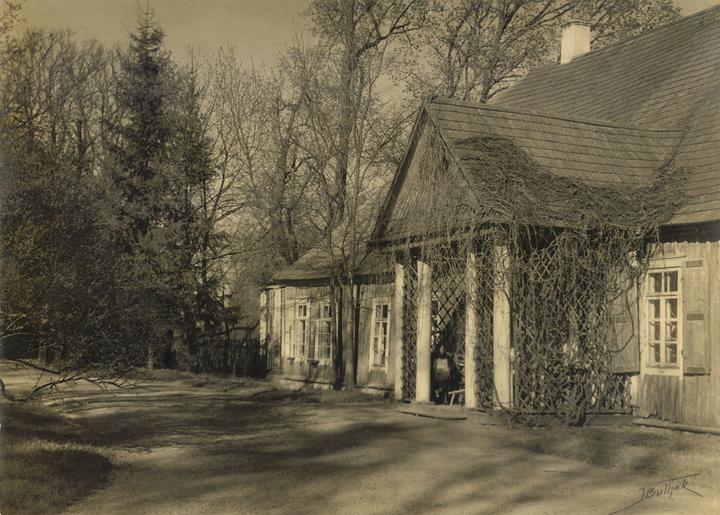
Bagdanava Estate. 1925 Photo Ja. Bulgak (1876-1950), a friend of F. Rushchyts.
1883-1890. Ferdynand Rushchyts studied at the Minsk State Classical Men's Gymnasium. He was good at studies and attended Kozma Ermakow's private art school to take drawing lessons. Kozma Ermakow had been a student of the St. Petersburg Imperial Academy of Arts. Throughout his life, Rushchyts often recollected his first teacher with respect and gratitude. After graduating from the Gymnasium with a gold medal, the young man entered the Faculty of Law of the Imperial St. Petersburg University on the orders of his parents.
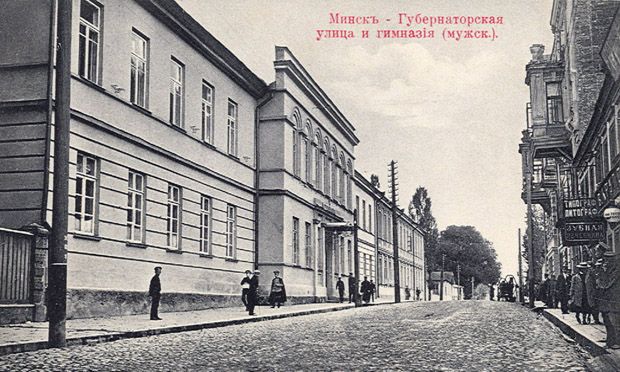
Minsk. Gubernatorskaja Street and the State Men's Gymnasium.
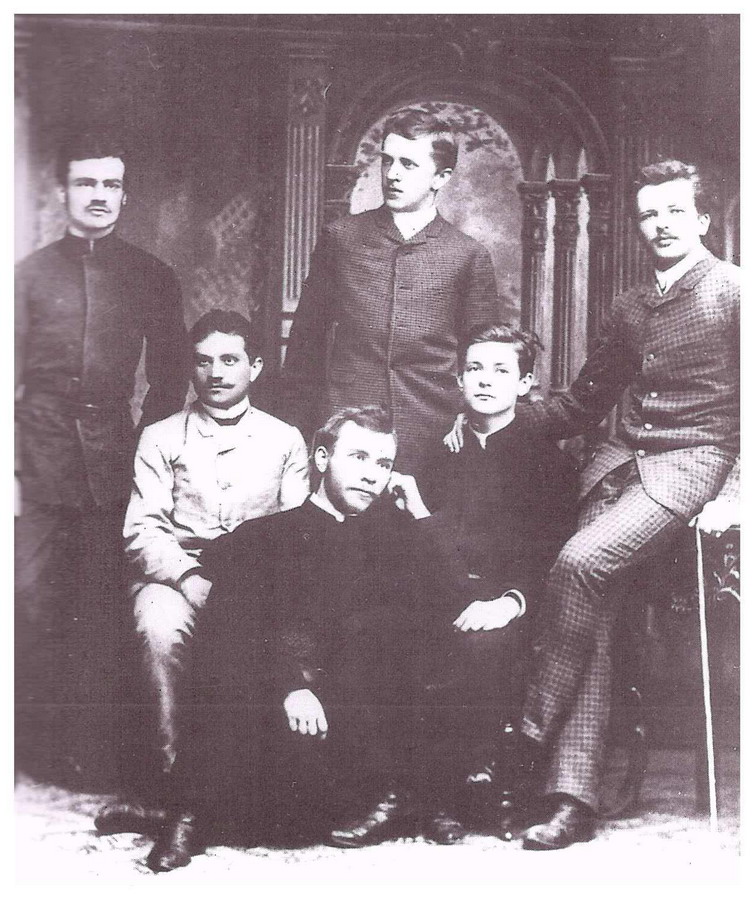
F. Rushchyts (in the middle of the second row) with friends – graduates of Minsk men's gymnasium.1890.
During his studies, he visited exhibitions and museums with great interest. In 1891, he applied to the Academy of Arts to enlist as a free listener in the Department of Oil Painting, and in 1892 decided to connect his life with art. F. Rushchyts was incredibly lucky with the teachers. He got into the landscape workshop to the most important Peredvizhnik, Shishkin, then to Kuinji. In 1897, Pavel Tretyakov purchased the diploma picture by Ferdynand Rushchyts “Spring”, shown at the exhibition in the Academy of Fine Arts. In 1898, a Moscow collector and patron Savva Morozov acquired a landscape “The Mill at the Sunset”. This was a real acknowledgement. The money received allowed the artist to travel to the countries of Western Europe. He visited Germany, Austria, France, Belgium, Switzerland, and Italy. Impressed by what he saw, Rushchyts nevertheless left a note in his diary: "We see the beauty of other countries, we admire them... but we love only our own, we feel that it belongs to us, and we belong to it."
At the end of the trip in 1898, Rushchyts returned to the family estate of Bagdanava, where over the next decade he made his best paintings, and the first among them was "The Land" (1898), which became Rushchyts' visiting card. The source of the artist's talent and inspiration when creating most of his landscapes was the real landscape of Bagdanava and its environs.
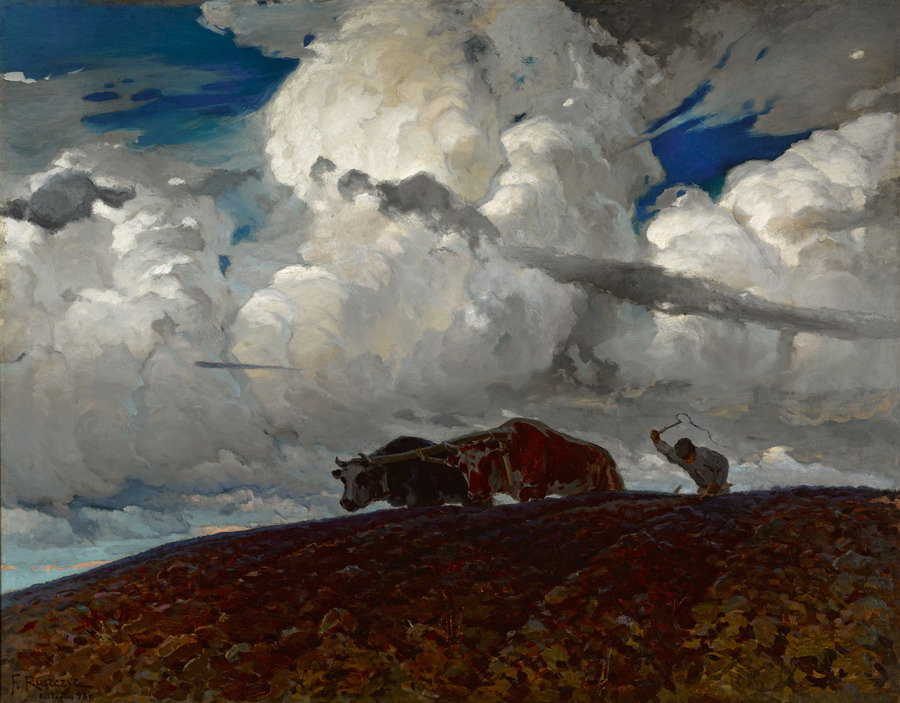
F. Rushchyts. The Land 1898.
In 1904-1907, Rushchyts took to teaching: he taught at the newly opened Warsaw School of Fine Arts and in 1907–1908, he was Professor of Painting at the Academy of Fine Arts in Krakow. In 1908, the artist moved to Vilnia, continuously moving from the city to the Bogdanovo estate and back. He painted a lot, but the artistic interests increasingly shifted towards crafts, book illustration and graphic design, scenography.
In 1911, F. Rushchyts takes part in a large and pretentious exhibition of 47 Polish and local artists in Minsk, organized by the sculptor Jaraslaw Tyshinski. The exhibition was held in the premises of the Polish club "Ognisko", which was located on Sobornaja Square (now the Belarusian State Academy of Music is located on this site). More than a dozen works by F. Rushchyts were presented at this exhibition. Among them, the main picture was a symbolic painting "Nec mergitur" (1905), which depicted a mystical ship with treasures, swaying on the waves in a stormy sea, remaining afloat (lat. Nec mergitur) and sailing away into the unknown. Now, this masterpiece is in the National Art Museum of Lithuania.
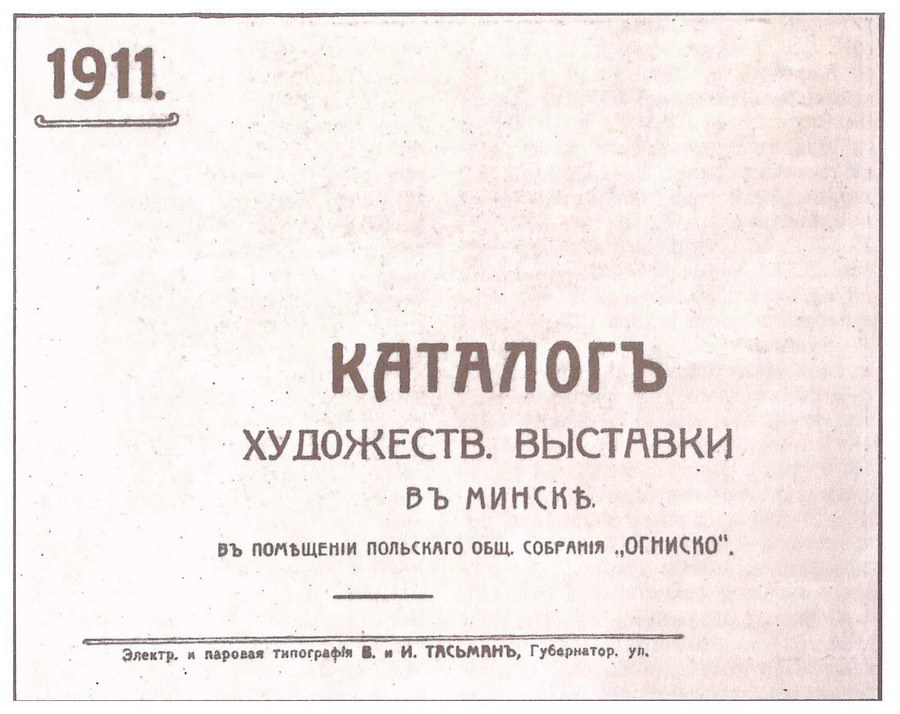
A catalogue of the 1911 art exhibition in Minsk
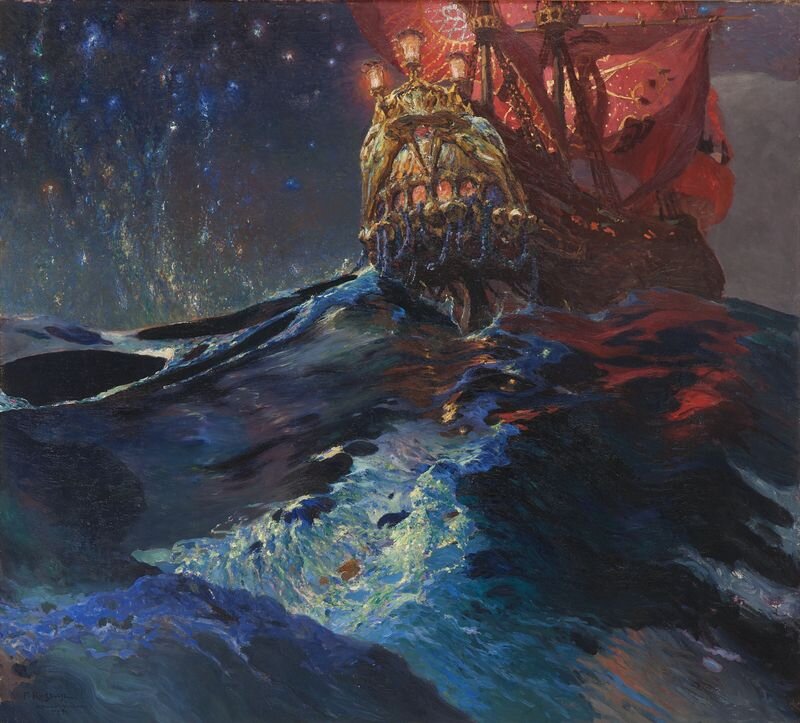
F. Rushchyts. Nec mergitur. 1905
The First World War forced F. Rushchyts to leave Vilnia and spend the German occupation in Bagdanava. In 1919, Ferdynand Rushchyts organized the Faculty of Fine Arts at the restored Stefan Batory Vilnia University. and later was its Dean (until 1933).
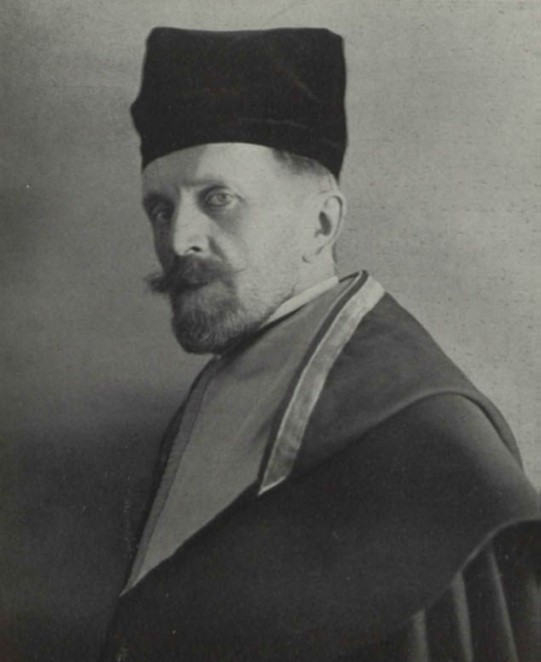
F. Rushchyts – Dean of the Faculty of Fine Arts, Stefan Batory University in Vilnia. 1919.
Much was done by F. Rushchyts in the early 1930s, when he was Chairman of the commission for the protection of ancient monuments. The last years of the artist's life were very difficult. As a result of an apoplectic stroke, the entire right side of his body was practically paralyzed, but he courageously continued to work.
F. Rushchyts passed away on October 30, 1936. He is buried in the family cemetery in Bagdanava, where his parents and wife also found their eternal rest.
The artist's huge heritage still attracts the attention of art lovers both for his high professionalism and the phenomenon of his multifaceted talent. In Poland and Lithuania, the name of Ferdynand Rushchyts was given to the places where he lived and worked, Bagdanava and Minsk streets were named in his honour and memorial plaques were installed. Gradually, the name of the outstanding artist and his pieces are returning to Belarus. There are plans to revive the family estate in Bagdanava, where artists and lovers of his work from different countries of the world can come together. Plein-airs have already become traditional for Rushchyts' small homeland.
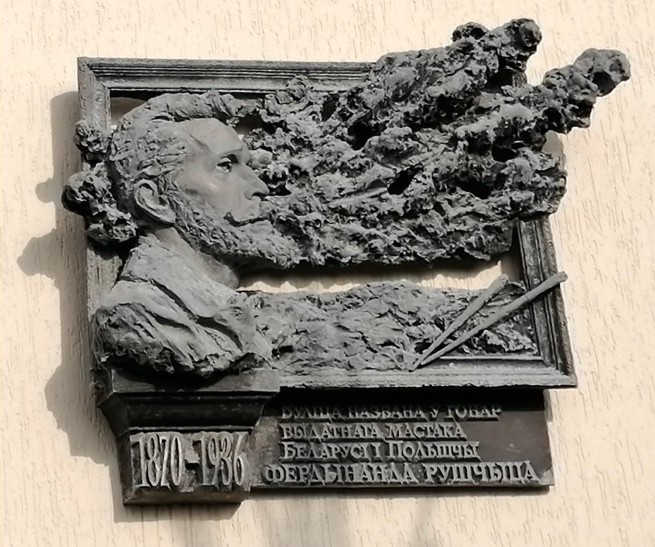
A memorial plaque on one of the buildings on Ferdynand Rushchyts Street in Minsk.
UNESCO included the name of Ferdynand Rushchyts, at the suggestion of Belarus and Poland, with the support of Lithuania and Russia, in the calendar of memorable dates for 2020. The grand opening of the Year of Commemoration of Rushchyts took place at the National Art Museum of the Republic of Belarus back in February with the presentation of the virtual exhibition "The Sky and the Land of Ferdynand" on the museum's website. The display features the pieces from Belarusian, Polish and Lithuanian museums and private collections. You can also see the art by F. Rushchyts in real life: visit the exhibition, which opened on November 27 at the National Art Museum, and enjoy the talent of the great master live, while observing the recommendations of the Ministry of Health on the prevention of coronavirus infection. The exhibition also features works by artists connected to Rushchyts. Among them are the works of his teachers Ivan Shishkin and Arkhip Kuinji, classmates Nicholas Roerich, Konstantin Bogaevsky, Vilhelms Purvītis, Arkady Rylov. One of the sections is dedicated to the master's students, outstanding Belarusian artists Piotr Sergievich and Mikhail Siawruk. Until recently, the collection of the National Museum of Art included only one work by the artist – "Near the Church" (1899). In 2019, three more paintings from the early period of Ferdynand Rushchyts were purchased and donated to the museum from the collection of his grandson.
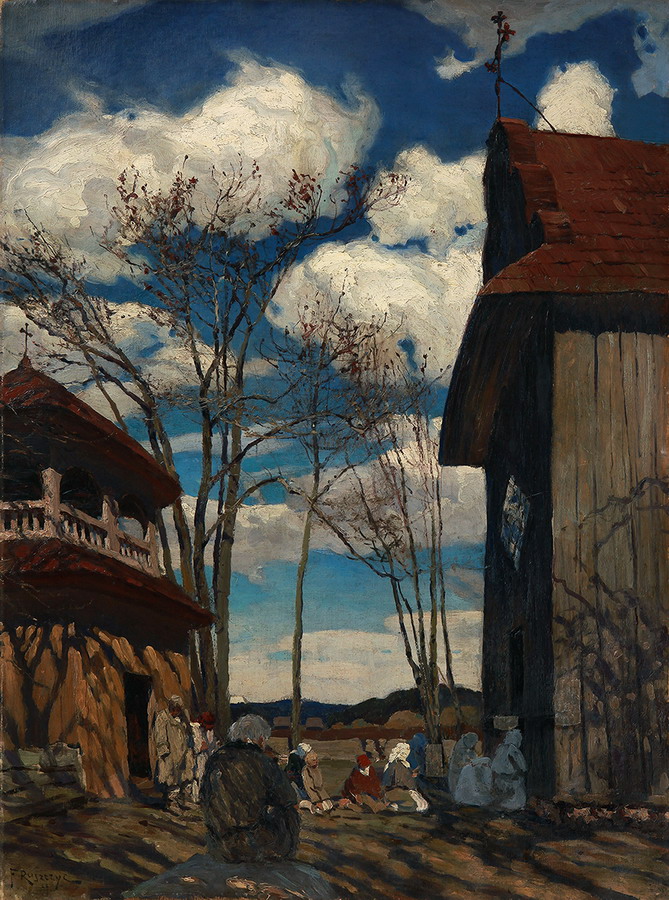
F. Rushchyts. Near the Church. (1899).
The commemorative rectangular coins “Ferdynand Rushchyts. 150” issued in September by the National Bank of the Republic of Belarus are also dedicated to the 150th anniversary of the artist”.
In November, “Piatrus Browka Belarusian Encyclopaedia” publishing house together with the National Art Museum released a unique publication, the album “The Land and the Sky of Ferdynand Rushchyts” about the life and work of the outstanding artist who is rightfully considered the founder of the national Belarusian school of landscape painting as part of the series “Artists of the Belarusian Land”.
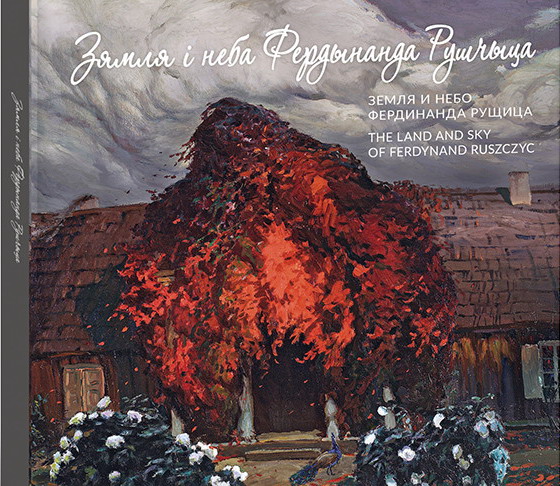
The cover of the anniversary album "The Earth and the Sky of Ferdinand Rushchyts". “Piatrus Browka Belarusian Encyclopaedia” publishing house (2020).
This edition, as well as many other materials dedicated to F. Rushchyts, can be ordered through the E-Catalogue in the National Library of Belarus. Some Polish publications by F. Rushchyts have been digitized by the National Library of Poland and are available remotely. We also advise you to refer to the online encyclopaedia "Belarus in Persons and Events".
In conclusion, we would like to quote F. Rushchyts lines from his "Diary", a unique source of information about the artist himself and his time, translation into Belarusian from Polish and published in 2002: “My diary! I wish you knew how much I strive to be a good son of my Motherland, work for her and plough for her, and if anything grew, to bring her all the fruits, because I love her with all my heart, and my soul and body belong only to her (F. Rushchyts, Diary: To Vilnia, 1894-1904 / Ferdynand Rushchyts. Minsk: TAA "Medysont", 2002, p. 120).
Bibliology Research Department

